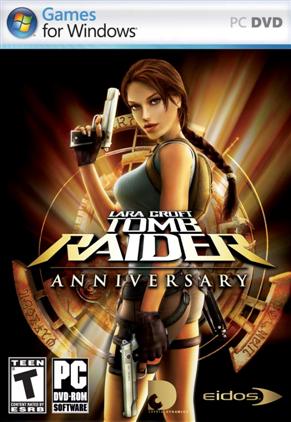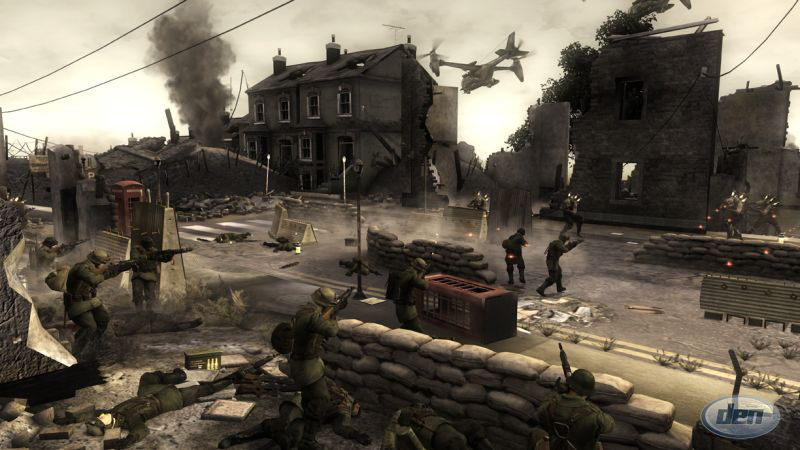Video game controversy
Contents |
Overview
The impact of video games containing controversy has been a heated subject since arcade games were introduced more than 50 years ago. For instance, video games containing violence has become a focus of research because children, who as the most obvious audience of gaming, are theoretically more susceptible to behavioral influences when they are active participants than when they are observers. This has not been helped by the fact that the gaming industry has grown into a mature multi-billion dollar market. Game publishers and game developers alike, in order to attract more buyers, are often accused of promoting sexuality content, violence and featuring historical events, features that attract buyers but which happen to be highly controversial.
The Different Types of Controversy
Sexuality and Nudity
Several video games have been known to display certain amounts of nudity and some game developers have not been shy in exploring sexual themes. Nude women, topless strippers and prostitutes have been featured in popular games, which may result in video gamers being subconsciously instilled a view of the roles of the female population in real life. The success of British game developer, Eidos Interactive's Tomb Raider series also brings another question into the picture - whether the main character, a certain Lara Croft was a female because she could be seen a sex symbol which would have boosted game sales.
But game developers and game publishers have often protested aloud that video games have been singled out for such controversies while other forms of media such as books, movies and television shows have not been given "due attention". Similar to movie ratings, game ratings have also hinted of nudity or sexual content, giving, in the game companies' eyes, parents and gamers ample warning.
Violence in Games
Violence in games is probably the most attacked upon feature of games. While it is true that Hollywood movies and books in general do also depict violence, but none are able to let participants (gamers in this case) take on the role of a killer/murderer/gun-carrier as much as games do in general. Take for instance Night Trap, a controversial game released by the Japanese game publisher Sega in 1992. The game required the gamer to rescue give next-door neighbors from zoombies using hidden cameras located all over the girls' house. Although not especially violent, the game nevertheless still stirred up public debate because of its stereotyping of young girls in nightgowns with death as the thematic next-door neighbor. Night Trap was not only controversial, but also a good example of how many games perhaps destined for anonymity gained otherwise unattainable success once heralded as violent or questionable in terms of content. Highly-controversial it was, but game publishers quickly saw how such violent games could still capture gamers' hearts and boost sales.
The game industry's arguments have not been helped by several public incidents involving game addicts who have supposedly been inspired by video games. Four of the most famous cases have been listed below:
- On April 20, 1999, American high school students Eric Harris and Dylan Klebold killed 13 people after which they committed suicide in what is now known as the Columbine High School massacre. The pair had previously been fans of the first-person shooters DOOM and Wolfenstein.
- In November 2001, 21-year-old American, Shawn Woolley committed suicide. His mother claimed his act was due to an addiction to an online multiplayer game known as Everquest.
- On June 7, 2003, 18-year-old American Devin Moore shot and killed three police officers after grabbing one of the officers' weapons following an arrest for the possession of a stolen vehicle. During the boy's trial, the defense claimed that Moore had been inspired by the video game Grand Theft Auto III.
- On June 25, 2003, in another highly-publicized shooting, two American step-brothers, Joshua and William Buckner, aged 14 and 16, respectively, used a rifle to fire at vehicles on Interstate 40 in Tennessee, killing a 45-year-old man and a wounding a 19-year-old woman. The two shooters later claimed to have been inspired by Take-Two Grand Theft Auto III.
Religious Grounds
Religion and video game controversy seem like the ultimate disaster waiting to happen and in fact, a lot of heated debate and exchanges have been produced by the combination of both. For a long time, video game developers have drawn inspiration for their storyline from religious content and tales. Popular games such as Breath of Fire II, La Pucelle Tactics, Xenogears and Xenosaga, Final Fantasy Tactics, Final Fantasy X, Castlevania, Tales of Symphonia, and Grandia II have been known to contain religious themes that some might find offensive.
In response to potential criticism, religious content has been censored in some Western releases of Japanese-origin video games. Japanese game developer and publisher Nintendo in particular censored many of its US releases. Games such as Castlevania, Dragon Quest, Final Fantasy containing references as crosses, the words holy, monk, and names of Biblical figures were censored for their US release. The game Terranigma was never released in North America, one of the stronger reasons being its religion-influenced plot.
In another famous example, the Xbox fighting game Kakuto Chojin offended many Muslims with the use of religious chanting in background music. The Saudi Arabian government made a formal protest, and Redmond-based Microsoft pulled the game internationally in early 2003.
In-Game Advertising
One example of a game that received alot of controversy over its utilisation of in-game advertising would be Battlefield 2142. Besides having ads plastered all over the place within the game, the first patch for the title included a disclaimer giving Electronic Arts the right to collect "advertising data" from the user's system. Battlefield 2142 also came with software developed by IGA Worldwide for the purpose of in-game advertising. Incidentally, Battlefield 2142 was GameSpot's Readers' Choice award winner for the "Most Despicable Use of In-Game Advertising" honor.
Famous Examples
Sexuality and Nudity
- Dead or Alive Xtreme Beach Volleyball is a beach volleyball game released by Japanese game developer Tecmo in 2003 for Microsoft Xbox video game console. Although it has been rated highly by gaming publications such as GamePro, IGN, GameSpot, GameSpy and Electronic Gaming Monthly for its gameplay, the game has been highly controversial since its release because it features computer rendered depictions of scantily-clad women playing volleyball. The only actual nudity seen though, is in the opening cutscene, where a game character dives nude into the ocean. However, very little of her form is actually on display due to the use of lighting.
- Duke Nukem 3D has been heavily criticized for their extreme depiction of females in the game. It has been noted that the only women that appear in the game are either strippers, prostitutes, cheerleaders or alien prisoners. George Broussard, the president of 3D Realms had defended the game previously, believing that its success means that consumers obviously do not find the content abusive or immoral. However, his reasoning is clearly flawed since success with some consumers is clearly not evidence that Duke Nukem 3D is more widely acceptable given its sexuality depictions.
- Grand Theft Auto: San Andreas is probably the first game that comes to mind when sexuality and nudity in games is mentioned. In mid-June 2005, a software patch for the game named the Hot Coffee mod was released by a 37-year old game modder name Patrick Wildenborg (under the Internet alias "PatrickW"). When the software patch is applied to the game, gamers can enter the main character's girlfriends' houses and engage in a crudely rendered, partially clothed sexual intercourse mini-game. Several high-ranking politicians in the United States, including New York Junior Senator Hilary Clinton had publicly derailed the game and indirectly motivated game publisher Take-Two's recall and re-release of the controversial title. It is also interested to note that the motto for the game is "What Lunatics Prosper", an equally controversial title which couldn't have done the game publishers any good in the eyes of certain people.
- The Guy Game is an adult video game for several game platforms, including the original Xbox and Sony's PlayStation 2. A trivia gameshow that supports up to four players, it consists of 20 episodes containing about 1000 questions. As the player gets more and more correct answers, more and more nudity of young girls without their clothes are shown. The game was temporarily halted in its distribution when one of the girls being shown nude was in fact a seventeen year old.
- Leisure Suit Larry: Magna Cum Laude is published by Vivendi Universal Games. It has three versions, the first one does not have full frontal nudity, the second one has full frontal nudity while the the three has both full frontal nudity and uncensored graphic sex scenes.
Violence in Games
- Carmageddon was one of the first racing video games to depict extreme violence. Players earn points by hitting pedestrians with their cars. In various countries, the game, when released, contained zombies or robots instead of people, as running over the undead was considered more acceptable by the countries' respective ratings boards.
- The Mortal Kombat Series began as a series of arcade games, which were picked up by US game publisher Acclaim Entertainment for the home console versions. The game is especially noted for its digitized sprites, and its high levels of blood and gore, including, most notably, its graphic fatality killing moves. These were so extreme that they, in part, led to the founding of the Entertainment Software Rating Board (ESRB) in the United States.
- Manhunt is a controversial third-person video game released by Rockstar Games (owned by Take-Two) in November, 2003. Although generally well received by critics for its gameplay, the game created a media frenzy on release, was banned in several countries and was blamed by the media as a cause for the murder of a 14-year old boy in the United Kingdoms.
- Manhunt 2 has been temporarily suspended by game publisher Take-Two due to a rating rejection in the United Kingdom and an AO rating in the United States.
Religious Grounds
- Resistance: Fall of Man is a science fiction first-person shooter video game, exclusive for the Playstation 3, developed by Insomniac Games. Before its release, the game had already garnered a lot of ill-publicity because the Church of England threatened legal action against Sony, for featuring Manchester Cathedral in the game without permission. On top of that, cathedral leaders accused Sony of the "desecration" of Manchester Cathedral, referring to one scene which depicts a shoot-out in which dozens of Leapers are killed during a bloody gun battle inside the cathedral. Officials described the use of the building as "sick" and sacrilegious and stated Sony did not ask for permission to use the cathedral.
In-Game Advertising
- Battlefield 2142 featured plenty of in-game advertising in the forms of billboards, paint sprays, etc. in the game, and was the center of controversy over the matter (see above).
- Swat 4 added dynamic in-game advertising to the game via a patch. It resulted in players being able to see posters with dirty-looking ads for real-life products throughout the game. On top of that, the game tracks how long one look at those ads and how close players get to them and all kinds of other stuff.
- Need for Speed Underground 2 attempted to emulate an illegal scene of "underground" street racing, but came across as really trying to drive its product placement down player's throat. Things like billboards on the sides of the roads aren't too bad, and the occasional real-life fast-food joint does its part to make the city feel a little more realistic. But basing the game's whole onscreen display around the logo for a cellular phone service provider crosses the line. In addition, the fact that players would need to spend much of their time in the game in between races driving around the fictional city, all the time being exposed to the ample amount of product placement, made the game feel like one is playing a big ad.
Legislation
US Senate Bills
US Senators Hillary Clinton, Joe Lieberman, Tim Johnson and Evan Bayh introduced a new United States Family Entertainment Protection Act (FEPA) on November 29, 2005. According to the US Senate official website, the bill calls for a federal mandate enforcement of the Entertainment Software Rating Board (ESRB) ratings system for video games in order to protect children from inappropriate content.
The FEPA would impose fines of $1000 dollars or 100 hours of community service for a first time offense of selling a "Mature" or "Adult-Only" rated video game to a minor, and $5000 or 500 hours for each subsequent offense. The bill also calls for a FTC investigation into the ESRB to ascertain whether they have been properly rating games.
Two other similiar bills were introduced by Senator Sam Brownback and Congressman Fred Upton. Known as the United States Truth in Video Game Rating Act and the United States Video Game Decency Act. Both seek to pass a law requiring the Entertainment Software Rating Board to have access to the full content of and hands-on time with the games it was to rate, rather than simply relying on the video demonstrations submitted by developers and publishers.
Founding of ESRB
- See main article Game_Ratings_And_Descriptor_Guide
Established in 1994 by the Entertainment Software Association (ESA), the Entertainment Software Rating Board (ESRB) is a non-profit, self-regulatory body. The board assigns computer and video game content ratings, enforces industry-adopted advertising guidelines and helps ensure responsible online privacy practices for the interactive entertainment software industry in the United States and Canada. The rating system is voluntary, although virtually all games that are sold at retail in the US and Canada are rated by the ESRB. Many retailers in the US and Canada, including most major chains, have policies to only stock or sell games that carry an ESRB rating, and most console manufacturers (including Microsoft, Sony and Nintendo) will only permit games that have been rated by ESRB to be published for their platforms which essentially makes the rating compulsory for any game developer or publisher which wishes their game to become mainstream.
Criticism of the ESRB
- See main article Game_Ratings_And_Descriptor_Guide
The Entertainment Software Rating Board has often been accused of not rating games harshly enough for violence and other related themes which may basically serve to undermine the whole rating system.
Critics have often pointed out that games such as Harvester, Soldier of Fortune and Manhunt have shown gruesome violence, yet only obtained the M rating instead of the harsher AO rating. According to official statements by the ESRB, titles rated M (Mature) have content that may be suitable for persons ages 17 and older. Titles in this category may contain intense violence, blood and gore, sexual content and/or strong language.
In fact, the ESRB has only given out the AO rating soley for violence twice: once for The Punisher and the second time for Manhunt 2. However, The Punisher was edited before release in order to qualify for the M category (the PC version however remains uncensored, yet still receives a M rating). This is yet another proof in the potential danger that game publishers and game developers usually edit and censor just enough to pass the ESRB's guidelines for a Mature rating.
Game publishers and developers have been known to withhold their game releases should the games be given an AO rating for violence. Manhunt 2 and Thrill Kill, two games given an AO rating for violence have both been withheld by their respective game publishers - Take-Two and Electronic Arts because of the potential public backlash that is expected from the release of the game.
Commericial Viability of Controversial Games
While the subsequent media frency and public outcry resulting from video games are well-known, it has not stopped game publishers and game developers from developing such games. Take for instance US game publisher Take-Two, who alone, has been involved with Manhunt, Manhunt 2 and the Grand Theft Auto series of games. Despite being fully aware of the consequencies, it seems that the commercial viability of such games and its ability to attract the targetted age group (males between 18-45) has clearly outweighed the cost stemming from its controversy.
References
- Wikipedia Video Game Controversy Entry, Wikipedia, Accessed 24 July 2007
- When Two Tribes Go to War: A History of Video Game Controversy, GameSpot, Accessed 24 July 2007
- A Brief History of Videogame Controversy, Wikipedia, September 09, 2003
- A History of Video Game Controversy, Slashdot.com, Accessed 24 July 2007
- Battlefield 2142 Ships Amidst Controversy, cbsnews.com, Accessed 30 July 2007
- Battlefield 2142 employ spies in your PC, Joystiq.com, Accessed 30 July 2007



